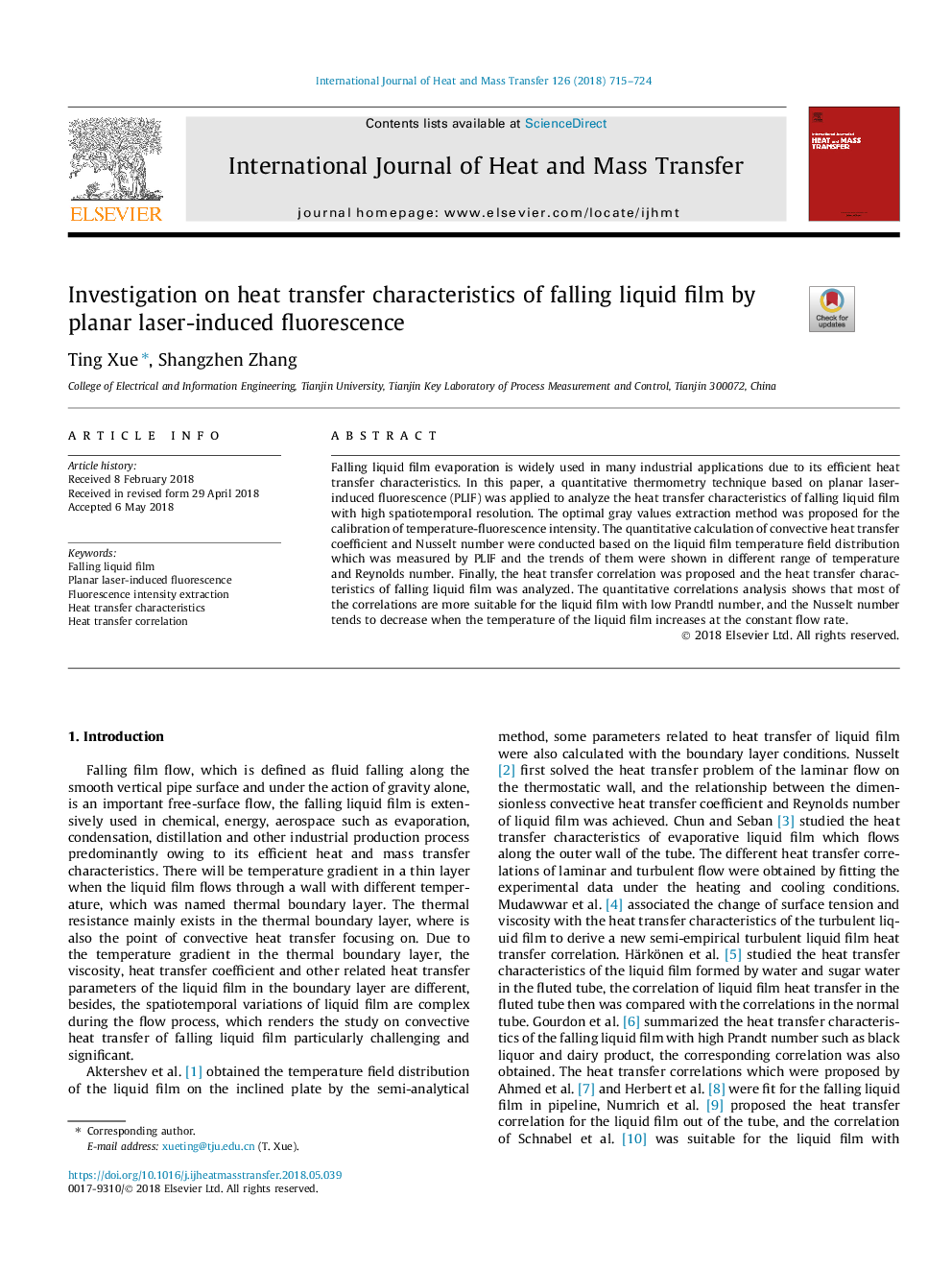| Article ID | Journal | Published Year | Pages | File Type |
|---|---|---|---|---|
| 7054020 | International Journal of Heat and Mass Transfer | 2018 | 10 Pages |
Abstract
Falling liquid film evaporation is widely used in many industrial applications due to its efficient heat transfer characteristics. In this paper, a quantitative thermometry technique based on planar laser-induced fluorescence (PLIF) was applied to analyze the heat transfer characteristics of falling liquid film with high spatiotemporal resolution. The optimal gray values extraction method was proposed for the calibration of temperature-fluorescence intensity. The quantitative calculation of convective heat transfer coefficient and Nusselt number were conducted based on the liquid film temperature field distribution which was measured by PLIF and the trends of them were shown in different range of temperature and Reynolds number. Finally, the heat transfer correlation was proposed and the heat transfer characteristics of falling liquid film was analyzed. The quantitative correlations analysis shows that most of the correlations are more suitable for the liquid film with low Prandtl number, and the Nusselt number tends to decrease when the temperature of the liquid film increases at the constant flow rate.
Keywords
Related Topics
Physical Sciences and Engineering
Chemical Engineering
Fluid Flow and Transfer Processes
Authors
Ting Xue, Shangzhen Zhang,
